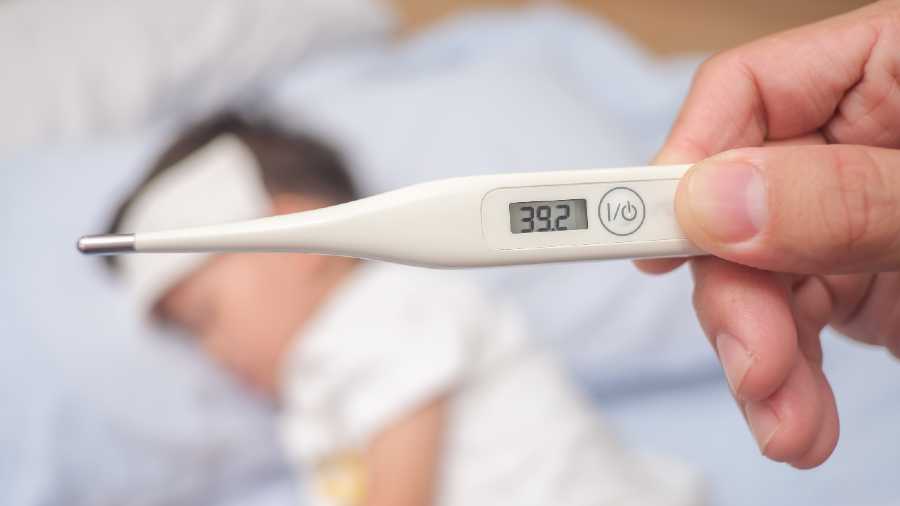Children down with viral infections should be taken to the nearest health centre or hospital and should not be treated with medicines bought over the counter, the Kolkata Municipal Corporation (KMC) said in an advisory issued on Thursday.
The 15-point advisory — which has separate columns for doctors, nurses, laboratory technicians, pharmacists and people in general — comes at a time the city is witnessing a spurt in viral infections, leading to a sharp rise in hospital admissions.
Many of the affected children — especially those less than two years old — are suffering from respiratory distress. High fever and persistent cough are other symptoms.
The advisory says guardians should not give medicines to the affected children without consulting a doctor.
Health workers in all 144 wards of the KMC will visit houses to find out about ailing kids and, the advisory says, “will motivate the parents to take them to the nearest health centre or hospital for treatment”.
Doctors at the ward health centres have to explain to the person accompanying an ailing child the risk of treating him or her at home before advising hospitalisation.
A doctor examining a child with a suspected viral infection must note down the patient’s history in detail.
Nurses at the KMC-run health centres will have to look out for warning signs.
They have to talk to guardians and find out
- The duration and severity of fever
- Whether the child is refusing to drink or eat
- Whether there is any fall in urine output.
A guideline issued by the state health department a few days back in regard to children down with viral infections had listed a few warning signs. They are fever for three days or more, fast breathing, urinating less than five times a day and a 50 per cent reduction in oral food intake.
Health department officials said analyses of swab samples since January showed a high presence of adenovirus, metapneumovirus, parainfluenza virus, bocavirus and rhinovirus, along with non-Covid-19 coronaviruses. Some doctors said they were also seeing the presence of influenza viruses like H3N2 and influenza A. All these viruses cause respiratory diseases.
“A preliminary survey suggests that nearly 33 per cent of the illnesses are caused by the adenovirus,” a health department official said.
Public health experts and doctors tracking the viral load said it was still not clear the exact serotype of the adenovirus that is active now.
“There are 54 serotypes of the human adenovirus. It is critical to identify the particular serotype that is responsible for such high fever and persistent cough,” said Amitabha Nandy, senior virologist and former head of the virology department at the School of Tropical Medicine.
Some virologists and doctors said a growing trend to buy azithromycin or other antibiotics without a prescription was making the situation even more complicated.
